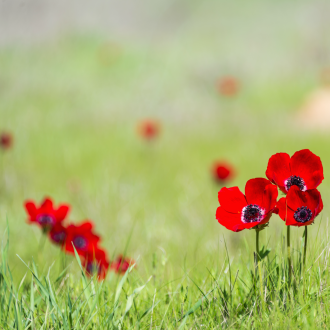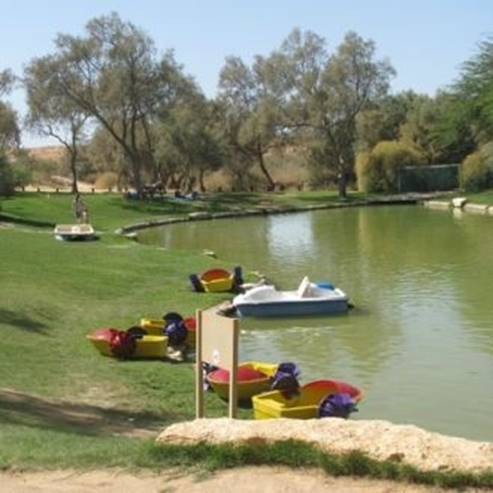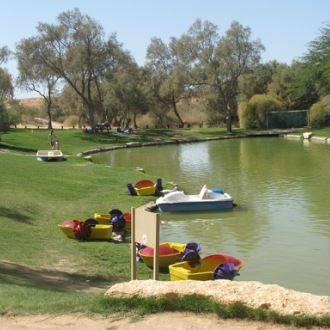The Oasis of the Western Negev
A nature park with short hiking trails and bicycles
The Eshkol National Park – Besor (Habsor) Park invites you to enjoy a few hours of relaxation. At
the heart of the western Negev, you’ll find flowing springs, 3,500 dunam of palm trees and
ornamental trees, pools and lawns, a disc-golf course, bicycle paths and fascinating relics from
the past.
Main Points of Interest
Enjoying the nature park
Observation point from Shalala Hill
Reconstructed train bridge and carriage from British Mandate times
Besor Springs
Paddling pools
Besor Spring site
Disk-golf course
Observation Point
Observation point from the top of Shalala Hill
NPA Activities to Improve Services to Visitors and to Conserve the Site
The NPA has built accessible restrooms and installed accessible picnic tables. The NPA planted
rolling lawns, planted trees for shade, created paddling pools in the Besor Springs, reconstructed
part of the train bridge that was built during the early days of the British Mandate, marked
bicycle trails and built a disc-golf course. The NPA also set up an organized campground.
How to Get There
From the Ofakim-Maon Junction road (Road 241). The entrance to the national park is west of
Ofakim, between the 4 and 5 km marks.
Background
The Eshkol National Park – the Besor Park – lies on the banks of the Besor River. Its main
tributaries are Nahal Beersheba (Beersheba Stream) and Nahal Grar (Grar Stream), which drain
the Hebron Mountains and the Lahav Hills. Nahal Besor is what remains of an ancient river that
deposited broken rocks and stones to create a layer of river pebbles in the Western Negev that
is tens of meters thick (the river pebble aquifer). This layer is replenished every year by flood
water and it collects large quantities of water. In the places where the stream’s channel is
deeper and reaches the layer of pebbles, the water flows out. Most of the springs are seasonal,
but the Besor Spring has a particularly thick layer of pebbles. It contains very large quantities of
water, and the springs here flow all year round.
There are about 2,000 date palms growing in the Eshkol-Besor park.
It is the largest concentration of date palms in Israel. Olive trees, Atlantic pistacia and mastic trees were also planted in the park, in addition to the indigenous wild trees here, such as tamarx, jujube and twisted acacia. Colorful seasonal flowers bloom during winter in the badlands and the banks of Nahal Besor. During February, the blossoming reaches a peak with spectacular carpets of red anemones.
The springs, vegetation, badlands and cultivated fields are a habitat for a wide range of animals.
It isn’t easy to spot the nocturnal animals, such as the caracal, red fox, mongoose and wolf. On the other hand, the many birds that fly through here are easier to spot. In the summer, the bright European roller and the European bee-eater nest on the cliffs of the badlands. In winter, many species of raptors sail through the skies of Nahal Besor, including the saker falcon and the rare eastern imperial eagle, and during the migration season, various species of buzzard and eagles nest here.
Winter is also the time for droves of cranes to drift through the fields. Resident
birds include the pin-tailed sandgrouse, cream-colored courser and the houbara bustard.
The Park Sites
The park does not consist of one trail, but of many sites. Visitors can come for an enjoyable picnic in the park, and pop over to any site of their choice from time to time.
These are the major sites:
1. Besor Spring
Besor Spring includes a large concentration of springs that together produce approximately 60 cubic meters of water an hour. The NPA collects the water from the springs, and channels them together into a single stream leading to a long, beautiful pool for visitors to enjoy. Another stream creates a series of paddling pools, the water from which eventually flows to Nahal Besor.
2. Besor Spring Site
Remains from an ancient building with a few layers of mud bricks were uncovered 200 meters south-west of the Besor Spring site. The strata of four settlements were uncovered, the three earlier levels being from the early Bronze Age (3300-2200 BCE).
The first settlement here was a Canaanite village, after that there was an Egyptian national way- station, and then a Canaanite village again. The site was abandoned and resettled again during the Helenistic period (2 nd century, BCE). During that time, it served either as a way- station or as a farm.
3. The Observation Point (Shalala Hill)
Shalala Hill is only 15 meters above the surrounding area, but there is a beautiful view from the top of the Western Negev plains and of the Nahal Besor channel crossing them. From the top of the hill, we can see the Nahal Besor channel, Sharuhen (Tel Pharaoh), the chimneys of the power station in Ashkelon, towns in the Gaza Strip, Netivot, and Mount Keren.
The hill has a large cistern that was dug in the courtyard of a Byzantine church.
During World War I, the mosaic floor of the church was exposed at an abandoned Turkish machine-gun post, and Australian soldiers discovered it. The mosaic is of high quality, and is in a style reminiscent of mosaics discovered in the Maon Synagogue and in Horvat Beersheba (Beersheba ruins), not far from here. The mosaic was moved to Australia and is exhibited at the Hall of Memory at the Australian War Memorial, in the capital city of Canberra.
4. The Railway Bridge
After World War I, the British laid a railway line from Rafah to Beersheba. The line crossed the wooden bridge over Nahal Besor. The line was inaugurated on May 8, 1918 and was in operation until July 31, 1927. The reconstructed wooden bridge and train carriage are located exactly where the original bridge was built, and commemorate the historic railway line.
5. Cycling Trails
The park offers two marked circular bicycle trails, one of 2.2 km long (marked in green) and the other 7.5 km long (marked in blue). The cycling trails are easy and suitable for the whole family.
The start and end points are in the shaded areas by the Besor Spring. Brings your own bicycles, as there are no bicycles for rent in the park.
6. Wading Pools Children are free to dip their feet in the wading pools and to enjoy playing on the playground facilities by the picnic tables. The water in the pools comes from the Besor Springs.
7. Navigation Trails
Navigation enthusiasts can challenge themselves to find numbered wooden posts located
throughout the park. A navigation map is available at the park cashier.
8. New: Disc-Golf Course
Recently, a disc-golf course was built here. Participants progress along a course of 18 metal
baskets. To advance, participants throw a kind of frisbee (flying disc) into the hoop. The
object of the game is to complete the course with as few throws as possible (as in golf). The
course consists of two levels and is suitable for all ages and levels of physical ability.
Visitors must bring their own frisbees.
9. The Besor Campgrounds
Private tents may be set up in the campgrounds. The campgrounds offer the following
services: restrooms, hot showers, cooking area, refrigerator, tables and benches, field
lighting and mobile phone charging units. The campgrounds are also suitable for caravans.
- Type
- Hiking
- Region
- South
- Near to
- Netivot
- Length
- A few hundred meters
- Duration
- About an hour of recreation until one day
- Recommended season
- Spring, Summer, Autumn, Winter
- Starting point
- Park Eshkol (map)
- Ending point
- Park Eshkol (map)
- Precautions
- Pay attention to children
- Parking
- Parking
- Accessibility
- Accessible
- Circular
- Circular
- Drinkable water
- Drinkable water
- Bathing water
- Bathing water
- Suitable for children
- Suitable for children
- Picnic suitable
- Picnic suitable
- Phone
- +972-8-9985110
Similar trails



Nearby attractions







Nearby restaurants







